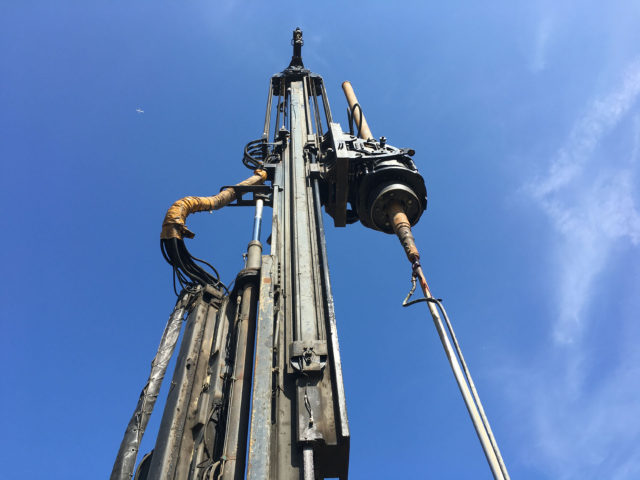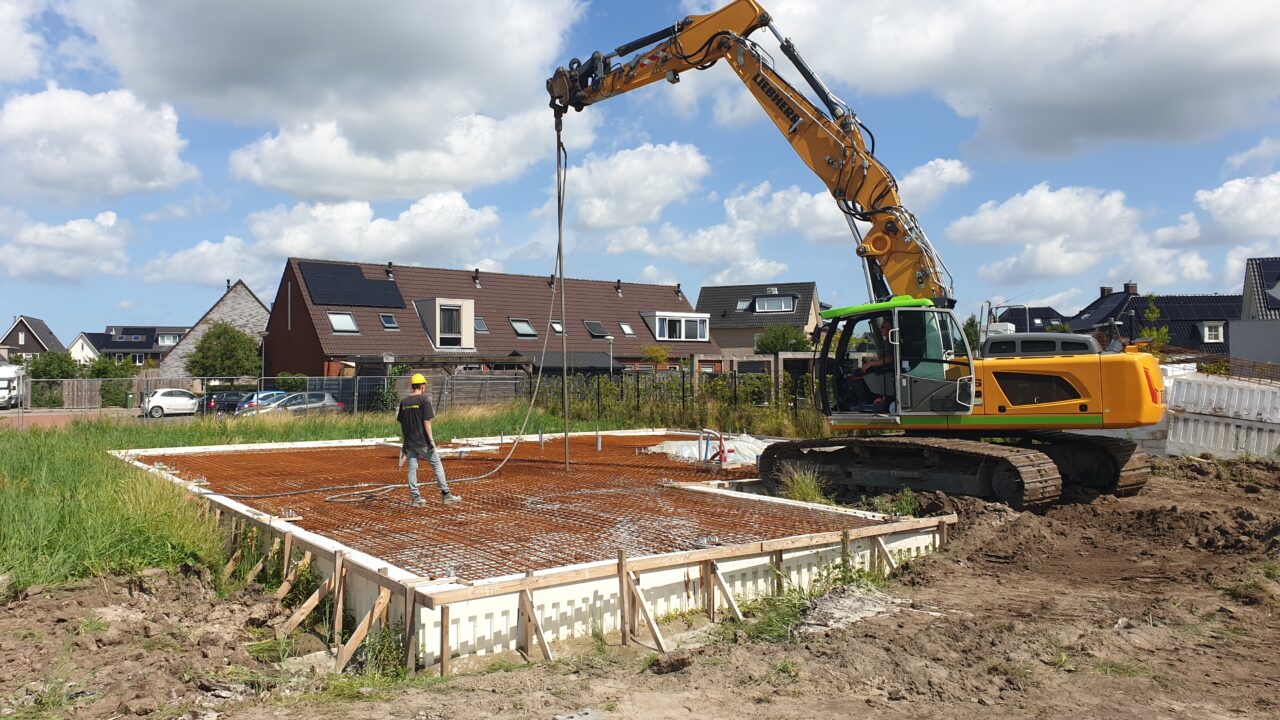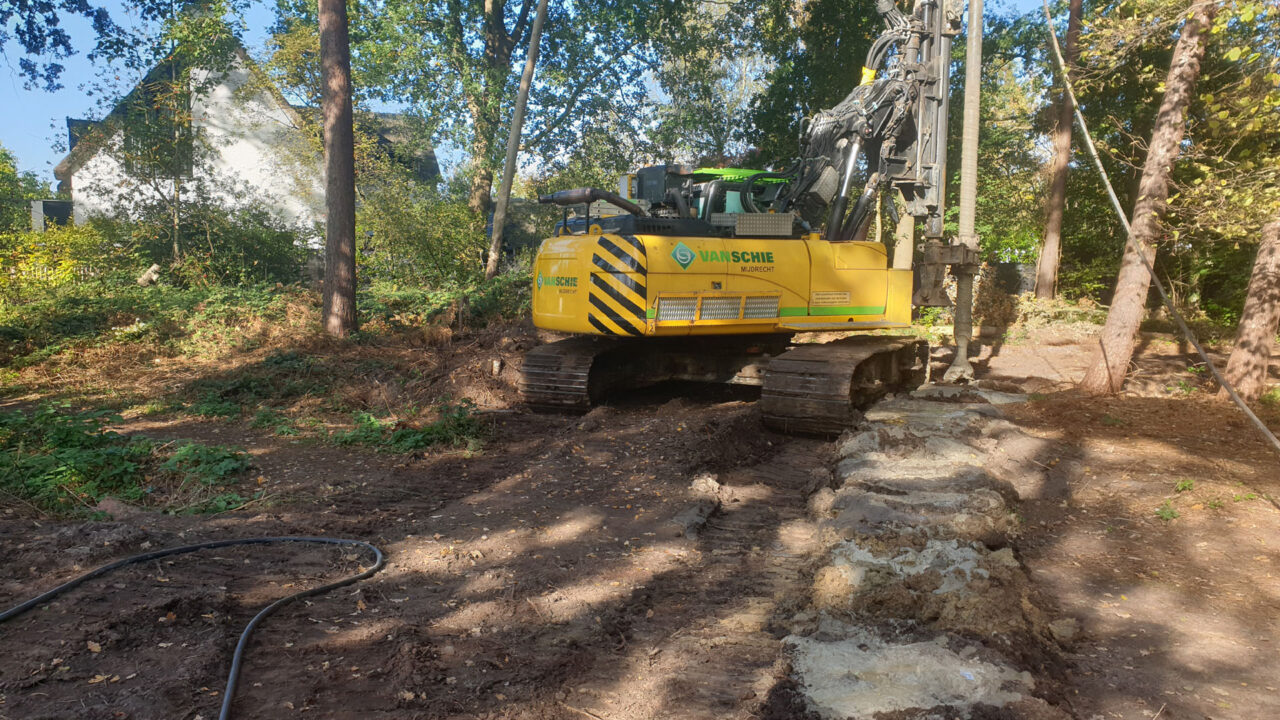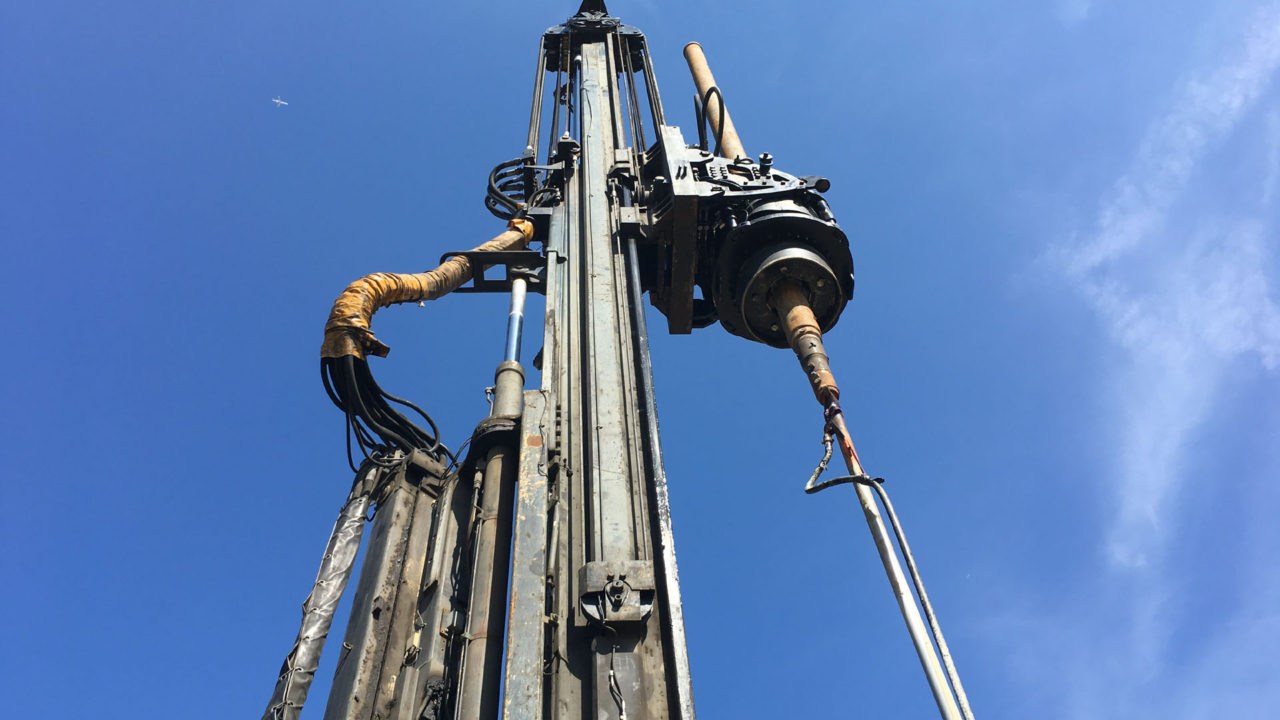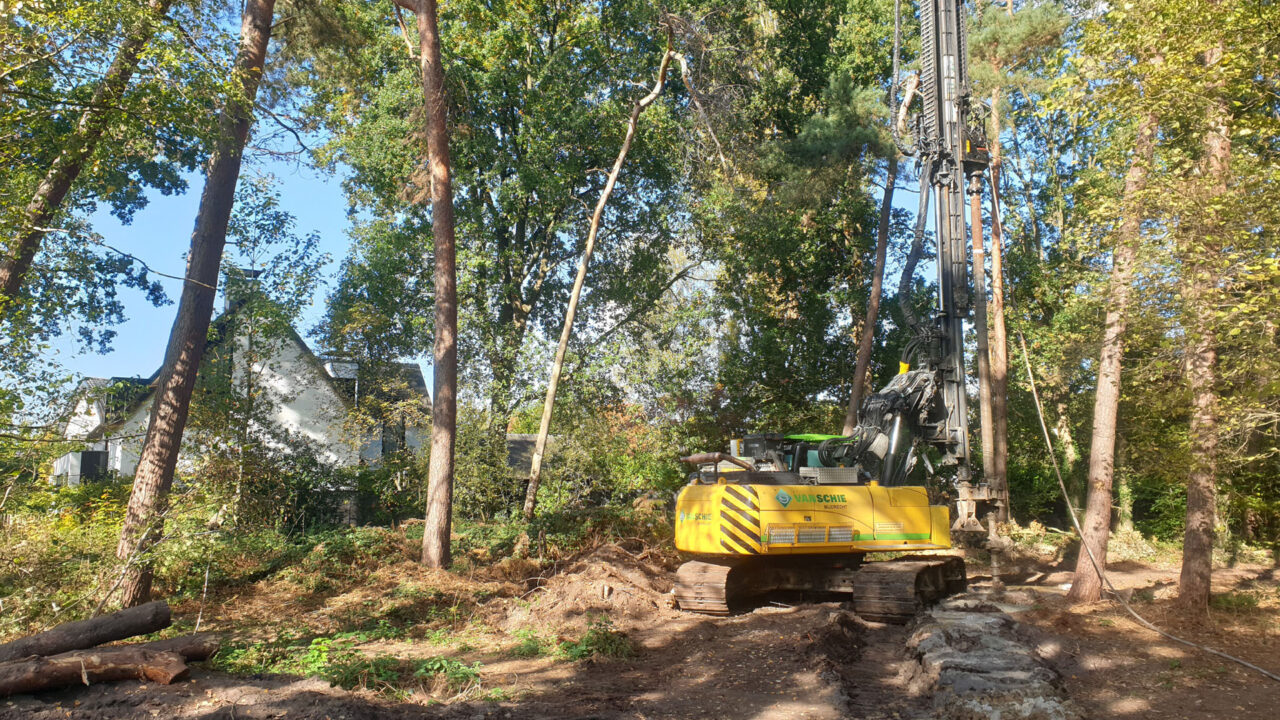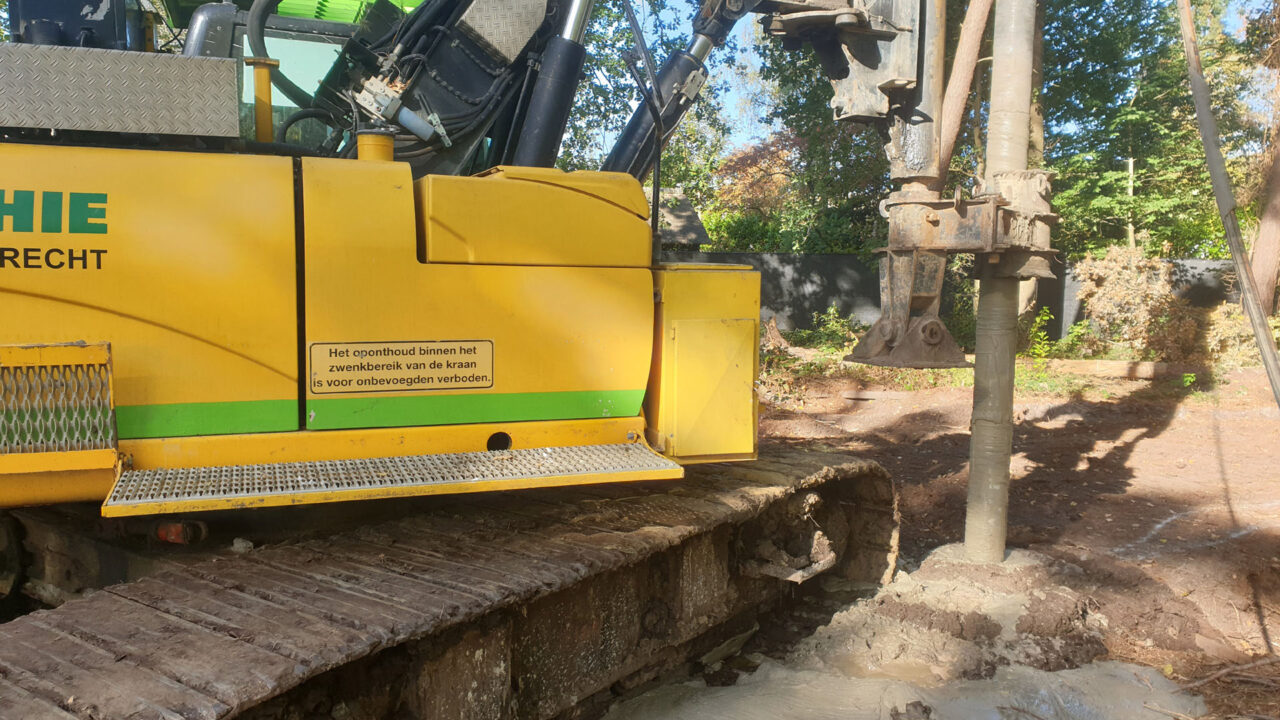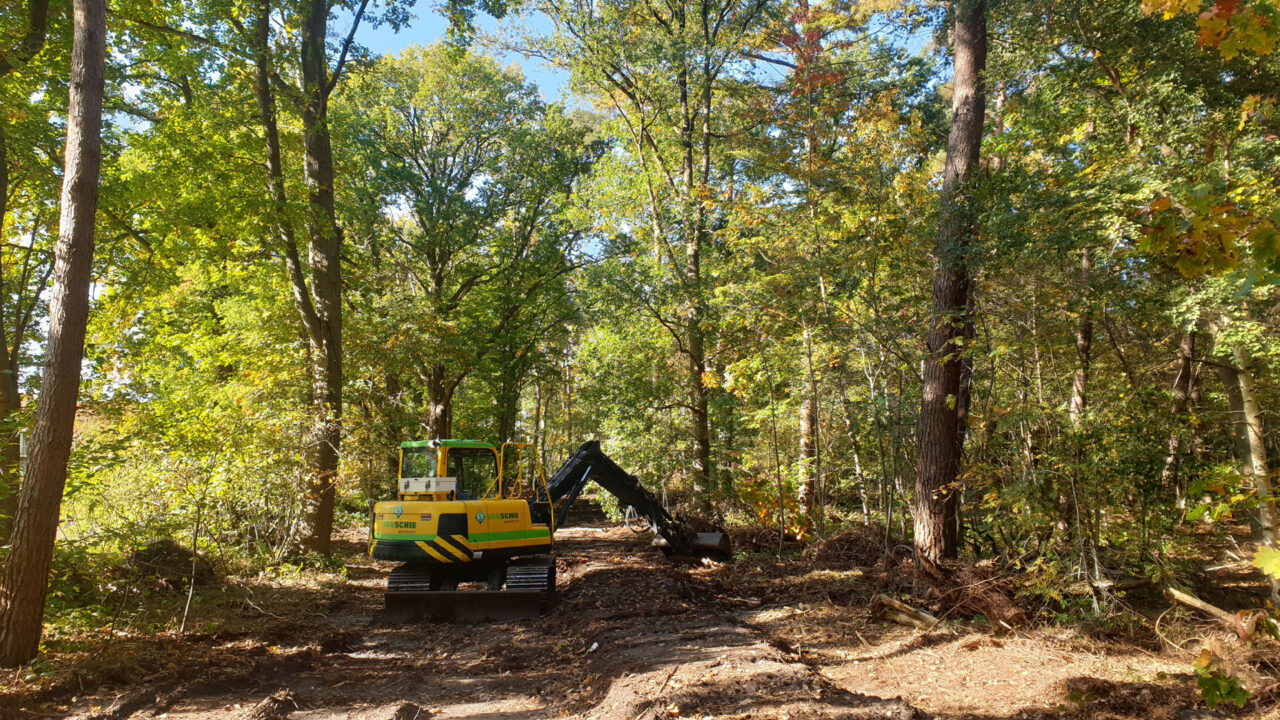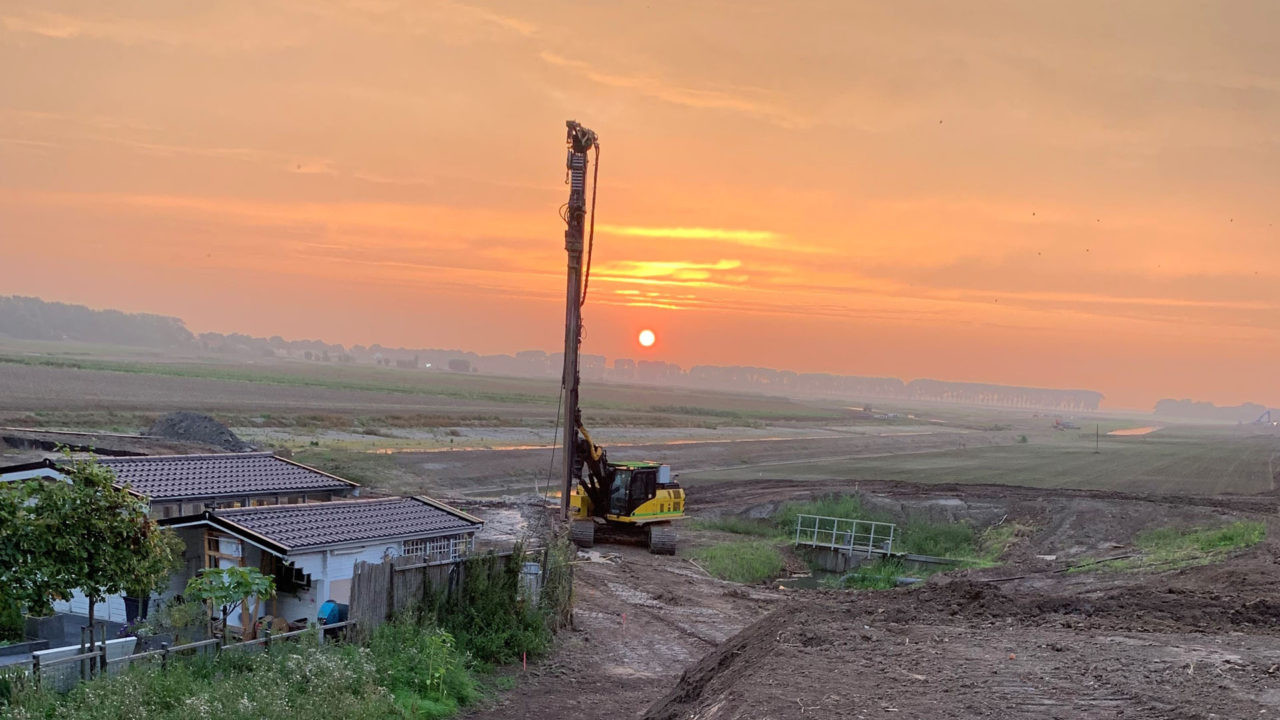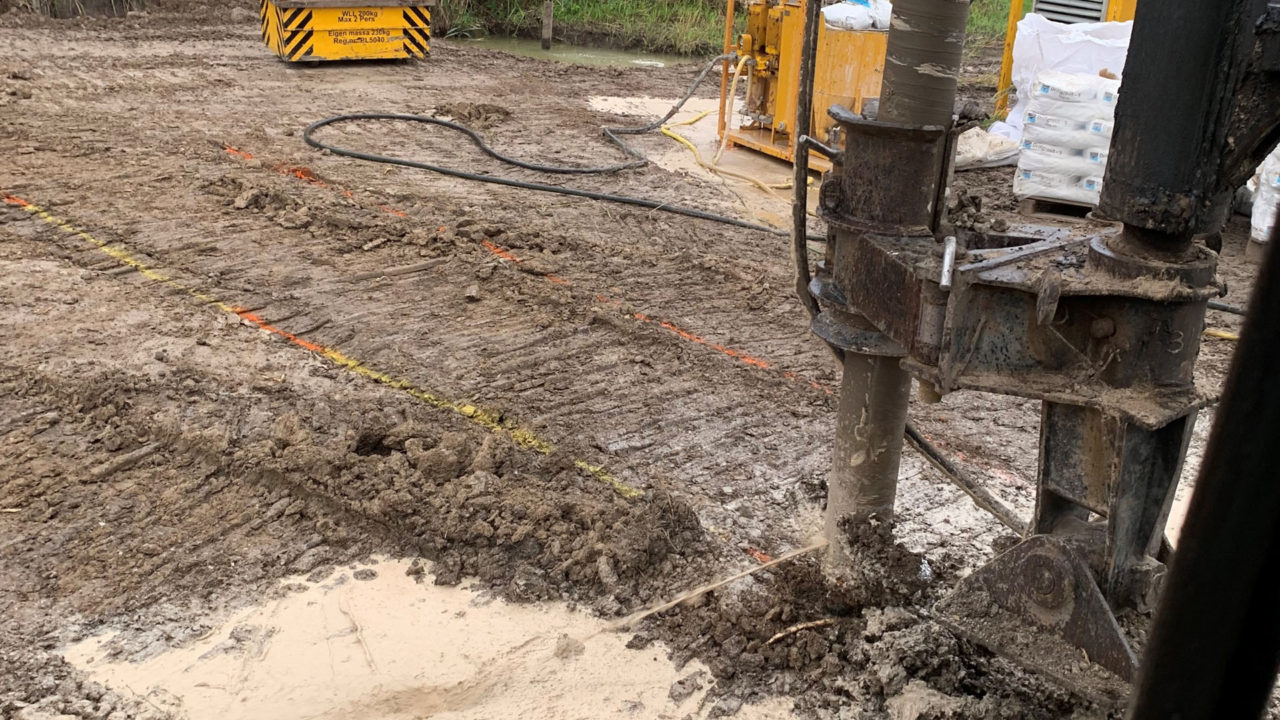An overview of the main ways we apply bentonite:
Bentonite is applicable in many ways. Below you can read about the main ways Van Schie does that.
1. Pre-drilling with bentonite for piles or sheet piling
To simplify pile driving or sheet piling, we often pre-treat the soil with a bentonite smear. Loosening the soil with a drilling crane makes it easier to insert the sheet piles. The bentonite then serves as a lubricant. As a result, you have less vibration and noise. And your work becomes more efficient.
2. Water retaining wall
Van Schie has also been making bentonite screens for dikes for years, which prevent different streams of water from “communicating” with each other. And thus realize on both sides of the screen, different water levels. A bentonite screen is also used as a seepage screen or water retaining wall.
3. Separation between contaminated and clean soil
When pulling piles, for example, you want to prevent contaminated and clean groundwater streams from coming into contact with each other due to groundwater flows or a spill, for example. Therefore, Van Schie injects the soil with a mixture of bentonite, sand and water.
4. Pollution treatment
Sometimes we add some to the bentonite. By doing so, we isolate the pollution and even manage to make the pollution break down. We call this technique soilmix.
5. Immobilization
Sometimes we capture the contamination by adding cement (or other additives) to the bentonite. With this, we immobilize the soil. Thus, leaching can no longer occur and there is better neutralization. Advantages of this technique are that no residual fraction is present and it can be applied to both metals and organic contaminants.
6. Bentonites after soil inspection
It regularly happens that before the construction of a new building begins, the soil must be checked. For example, in some parts of the Netherlands, such as around Schiphol Airport, the soil is checked for residual bombs, or bomb debris. A probe is then pricked into the soil, sending out a signal. This will check that no bombs are present (anymore). After withdrawing the lance, then we “bentonite” the resulting hole to ensure that the soil layers are not mixed after this survey.
Other uses of bentonite include:
- Filling hollow space of a hole
- Filling crack in dike
- Fill subsidence of sewer and (civil) pipes
- Dike subsidence
- Fill boreholes, foundation holes or soil holes


